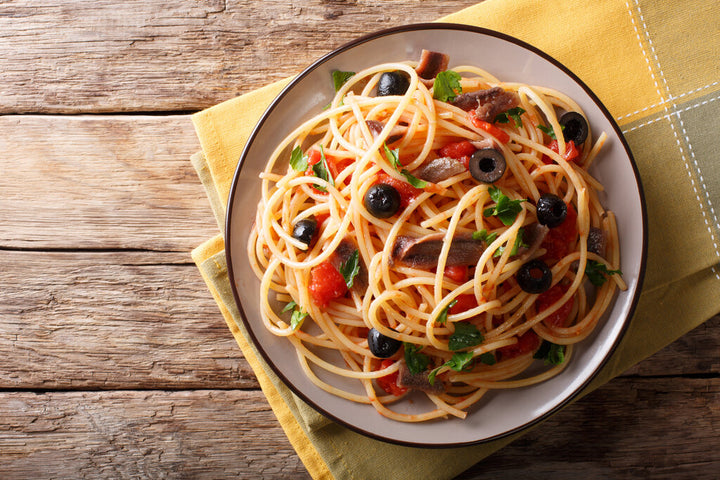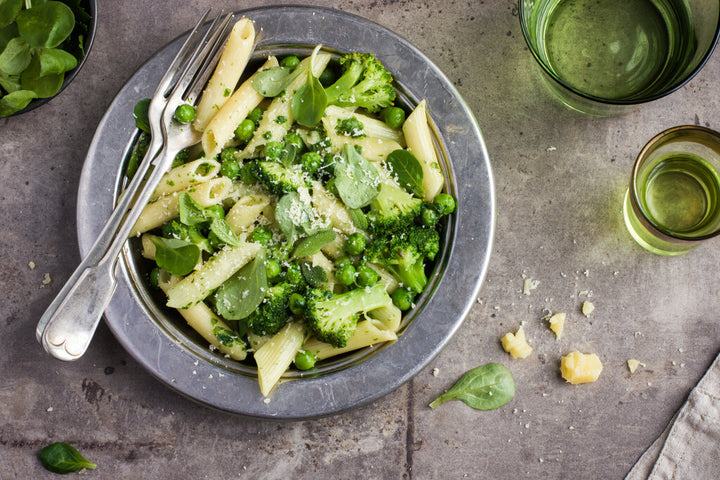One taste of this spice-scented Moroccan chicken with olives and mouth-puckering, delicious preserved lemon slices, and it will transport you to the coast of North Africa from which the tagine originates. Follow our simple recipe below to braise your chicken to perfection!
What is a tagine?
This North African cooking pot, typically made from clay, has a broad, round base and a conical, tight-fitting lid. North Africans and Moroccans use this classic dish to braise their favorite flavorful meats and veggies for hours on end.
While you don’t need a tagine to make our Moroccan chicken recipe, it’ll certainly help to keep your tagine stew moist as it simmers on your stovetop. We use a cast-iron tagine to build and cook this recipe and as a serving dish for our meals, too. If you’d like to substitute a different cooking dish instead, read our FAQ below.
No matter the dish you use, follow these simple instructions and enjoy this salty, savory dish for a fantastic dinner that never falls short on flavor.
FAQ
Do I need a tagine?
While you don’t need a tagine pot to make this chicken lemon olive tagine, it’s the best way to stew your meat to perfection. We love using our cast-iron tagine pot as both the stewing dish and serving dish - these beautiful pieces make quite a statement.
If you use a clay tagine, it’s best to soak it in water overnight to avoid cracking. If you own a cast-iron tagine, DO NOT soak it in water unless you want your pot to get rusty.
If you don’t own a tagine, you can still make this meal pretty simply at home! Just use a thick-bottomed, large skillet with a tight-fitting lid - cast iron is a great option.
Do I need to use preserved lemons?
There is one stand-out star of the show in this Moroccan chicken tagine - preserved lemon! We highly recommend buying some from the grocery store if you don’t have any at home, as the flavor adds some delicious tang, acidity, and complexity.
If you can’t find or purchase preserved lemons, use thin slices of regular or Meyer lemons instead and add some extra salt at the end to make up for the lost salt from the pickled lemons.
What to serve with chicken tagine?
Cooks traditionally serve herbed couscous with their chicken tagine, and that’s certainly a great option here, too. If you don’t like couscous, you could also try steamed jasmine rice, rice pilaf, or even rice noodles.
You could also serve your Moroccan chicken with apricots or with lemon and olives in a bowl with some naan or crusty bread for dipping - yum!
Which chicken should I use?
If you like both white and dark meat, you can use a blend of both in your recipe, which is why we included a whole chicken for variety.
You can also choose just dark meat, like chicken legs and thighs, as the robust flavors improve the dish while the meat becomes incredibly tender as it braises. Choose bone-in, skin-on meat as much as possible - that deliciously rich fat is a natural flavor builder in classic tagine cooking.
Avoid using only white meat, as it tends to dry out a little more when braising without the dark meat's fats to keep it moist.
Final Notes & Storage Tips
More often than not, this chicken tagine tends to disappear from right under your nose, but if you have some leftovers, you can leave them for up to three days, covered in the fridge.
We don’t recommend freezing this dish, as the preserved lemons and olives flavors don’t stand up well to the freezing and thawing process.
This stewed Moroccan chicken with preserved lemons and olives is a thing of salty and savory beauty - we hope you enjoy it as much as we did!
Leave a comment
Comments will be approved before showing up.
Also in Recipes










